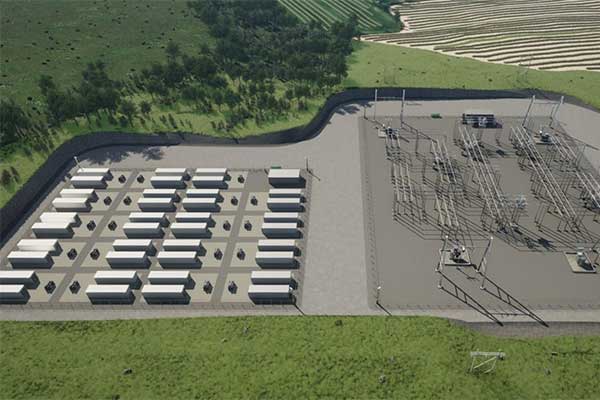Nova Scotia Power, along with its partner, the Wskijinu’k Mtmo’taqnuow Agency Ltd., have announced they are using CIB/NRCan funds to build three 50 MW, four-hour battery storage facilities in White Rock, Bridgewater, and Waverley.
The Canada Infrastructure Bank and Natural Resources Canada are providing a combined $249.2 million for a new multi-location energy storage project in Nova Scotia.
“This is one of a suite of projects and initiatives that will help us to achieve the climate goals of reaching 80% renewables and moving off coal by 2030,” says an NS Power spokesperson to Electric Autonomy. “Batteries and other energy storage technologies are essential in our move towards more renewable electricity.”
The new energy storage facilities will be pivotal in helping to draw and store renewable electricity during off-peak periods, releasing it back to the grid as needed.“As more demand is added to our grid from the electrification of transportation, homes and more, a reliable and clean grid is essential,” adds the NS Power spokesperson.
The project still requires regulatory approval. NS Power and WMA expect to start construction at the sites in 2024 and continue through 2026. Should everything go to plan, the first site will be operational by 2025.
The WMA, formed in 2019, comprises 13 Mi’kmaq communities in Nova Scotia. Its focus is on developing partnerships with industry leaders to engage in economic opportunities within the province. The partnership between the WMA and NS Power was essential to securing the funding needed for the energy storage project.

Nova Scotia Power generates more than 2,400 megawatts of electricity that is delivered across 32,000 km of transmission and distribution lines. (Andrew Vaughan/Canadian Press)
NS Power is receiving a loan of up to $120.2 million from the Canada Infrastructure Bank (CIB). The utility is also receiving $111 million from Natural Resource Canada’s (NRCan) Smart Renewables and Electrification Pathways program. The grant funding will help manage costs for NS Power customers, says the spokesperson.
Meanwhile, the WMA receives financial support through an equity loan of up to $18 million through the CIB’s Indigenous Equity Initiative (IEI). The loan to WMA is the first under the IEI. The initiative supports Indigenous communities with access to capital to invest in infrastructure projects.
The CIB/NRCan funding will cover 90% of the project cost. The other 10% will come from a loan from the Ulnooweg Development Group, an Atlantic Canada-based loans and business services provider to Indigenous entrepreneurs.
“This investment in battery storage is a significant step towards true economic reconciliation and developing a more sustainable future for all Mi’kma’ki,” says Crystal Nicholas, president, Wskijinu’k Mtmo’taqnuow Agency Ltd in a press statement.
Echoing Nicholas, the NS Power spokesperson added, “this a very important step on our journey toward reconciliation [and] it will take all of us working together in a meaningful way. This [project] will start to address economic gaps between Indigenous and non-Indigenous communities while supporting the growth of clean energy.”
Last year, the WMA also partnered with Natural Forces Development in two wind farm projects in Nova Scotia: the Benjamins Mill wind development and the Westchester Wind Project. The Benjamins Mill wind project will consist of 28 turbines located 14 kilometres southwest of Windsor, N.S. Its goal is to generate up to 150 MW of energy, enough to power about 58,000 homes.
The Westchester Wind Project, located in Cumberland County, will feature 12 turbines with the capacity to generate approximately 50 MW to 84 MW of power. This will provide electricity for over 17,000 homes.
Both projects are currently in the planning and construction stages. They are anticipated to operate for at least 25 years, starting from 2025, “Creating a greener future is a priority for the Mi’kmaw Nation, and WMA is proud to be doing our part to bring about positive transformations to the energy industry,” according to Nicholas.
The partnership between Nova Scotia Power Inc. and the Wskijinu’k Mtmo’taqnuow Agency Ltd. represents the latest step towards achieving the province’s renewable energy goals while fostering economic reconciliation with Indigenous communities. This multi-location energy storage initiative enhances grid reliability and paves the way for sustainable clean-energy expansion and innovation.











Comments